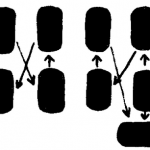October 19, 2015
Car tyres can suffer some degree of damage due to a puncture. The severity of damage depends on which specific part of the tyre was punctured. The area where the puncture occurred is a major determinant if the tyre can still be repaired or if a replacement would be necessary. It is REPAIRABLE if: It has been punctured by a small object (a nail, bolt or screw). Tiny objects can generally cause small holes on the tyre which lead to a slow puncture. Although small holes do not necessarily mean severe damage, they must be fixed immediately. Slow punctures can...
View Article
October 19, 2015
Your car is riding on air. Literally. Come to think of it, the air inside your tyres supports the vehicle’s entire weight. Whether you’re using 4WD or 4×4 tyres, it’s important to ensure your tyres are inflated to the right pressures. Overinflating and underinflating your tyres can result in a variety of problems like uneven tyre wear and sudden blow outs. To avoid problems on the road, follow these steps to ensure correct pressures. #1. See the car manufacturer’s manual. Car manufacturers typically have guidelines for your tyre’s ideal inflation. Most of the time, they recommend the minimum pressure which...
View Article
 October 12, 2015
October 12, 2015
There are many ways to extend the service life of your tyre and keep your car performing at its best – one of these is tyre rotation. However, many vehicle owners think that this service offers little value and only contributes to their expenses. But if you ask mechanics, mobile tyre service specialists, and even carmakers, all of them will tell you that wheel rotation can have significant long-term benefits. What is Tyre Rotation? Tyre rotation is basically the practice of rearranging and moving each of your vehicle’s wheels from one position to another. As a preventative maintenance task, it...
View Article
